Censorship, Bluenoses, Taboos, Prohibitions and Other Cultural No-No’s
Marty Snyder, the blind movie censor
Supreme Court Justice Potter Stewart famously said, when asked to define pornography, "I know it when I see it."Marty Snyder couldn't see it, but he figured he would know it anyway, especially if the person sitting next to him filled him in on what he was missing.
Snyder ended up serving on the Clarkstown censorship panel for less than a year because he died of a stroke in 1974.
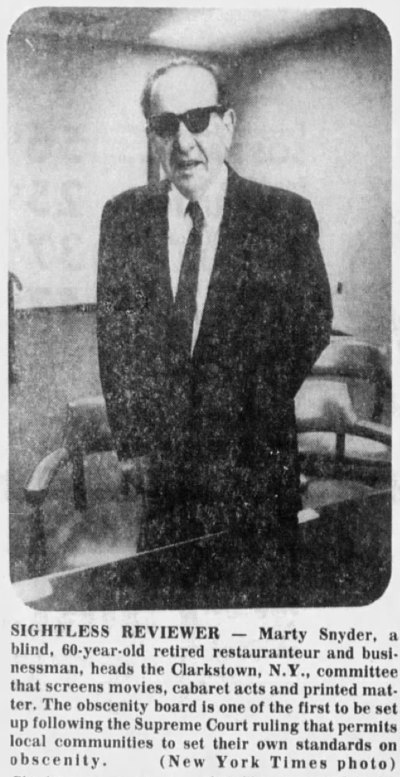
South Mississippi Sun - Oct 25, 1973
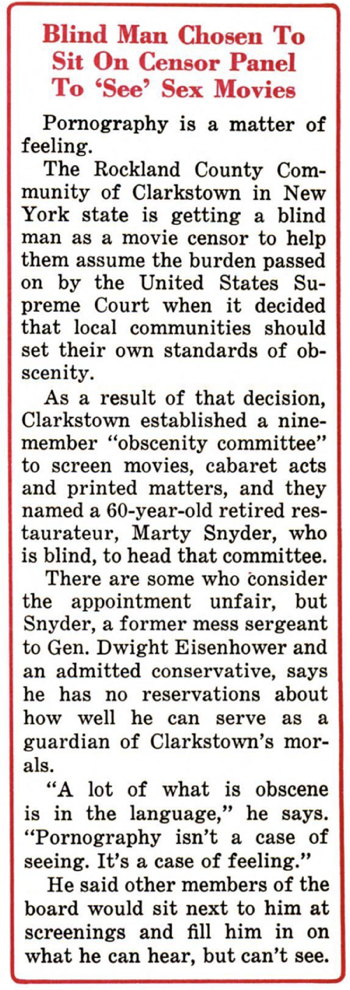
Posted By: Alex - Fri Aug 25, 2023 -
Comments (0)
Category: Censorship, Bluenoses, Taboos, Prohibitions and Other Cultural No-No’s, 1970s, Eyes and Vision
Immorality of artificial legs
Mrs. J.D. Grudger is the perfect name for a bluenose.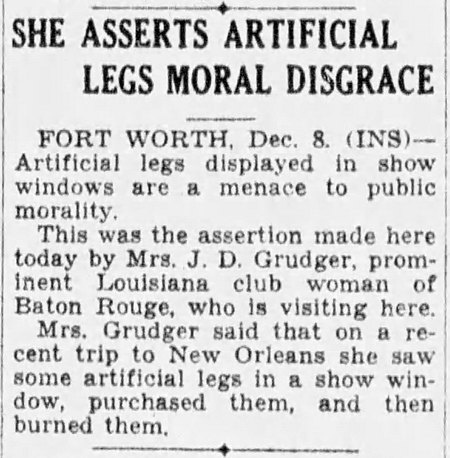
Wichita Daily Times - Dec 9, 1928
Posted By: Alex - Mon Jun 26, 2023 -
Comments (5)
Category: Censorship, Bluenoses, Taboos, Prohibitions and Other Cultural No-No’s, 1920s
Nudists eject clothed parson
Dr. Braxton B. Sawyer was an anti-nudist activist. In August 1954 he attempt to gain entry into the American Sunshine Bathing Association Convention in order to film the people inside and thereby expose "the national threat of nudism." Guards at the door told him he was welcome in but only if he followed the rules that applied to everyone — that he first remove all his clothes. He refused and was eventually forcibly ejected.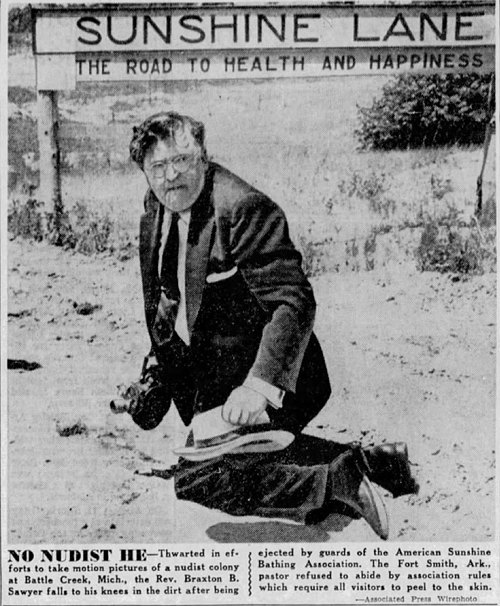
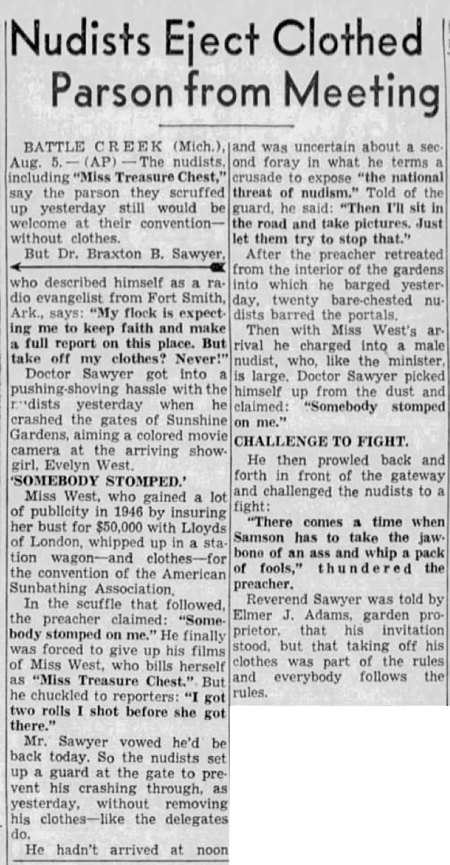
San Francisco Examiner - Aug 6, 1954
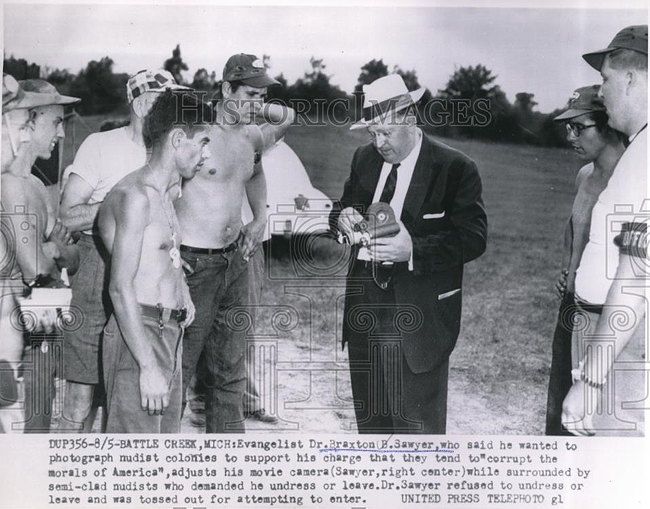
In addition to crusading against nudism, Sawyer was also well known as a dog breeder and American Kennel Club judge. His article, The Value of the Brood Bitch, is available online.
Posted By: Alex - Thu Feb 23, 2023 -
Comments (2)
Category: Censorship, Bluenoses, Taboos, Prohibitions and Other Cultural No-No’s, 1950s
Whore to Score
How times have changed. Now, "whore" is practically G-rated.The album cut below retains "whore."
Source.
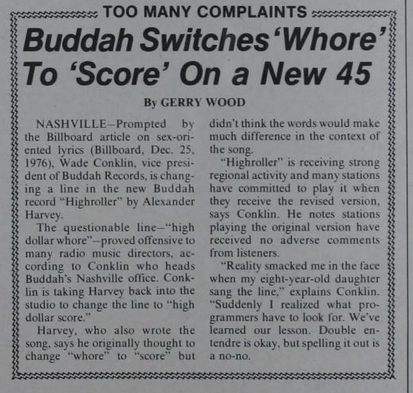

Posted By: Paul - Tue Nov 15, 2022 -
Comments (1)
Category: Censorship, Bluenoses, Taboos, Prohibitions and Other Cultural No-No’s, Music, 1970s, Swears
Mother Goose Controversy
1937: I don't know how Khrushchev would have felt about the Mother Goose mural painted on a wall at the Glenn Dale Sanatorium outside Washington D.C., but health officer Dr. George Rhuland felt it was "grotesque" and ordered it painted over. I think he was eventually overruled.I'm not sure what he found objectionable about it. Perhaps he didn't like the modernist style.
Meanwhile, the Glenn Dale Sanatorium has since become an abandoned relic, which remains standing, rather than being torn down, because of the asbestos remediation costs.
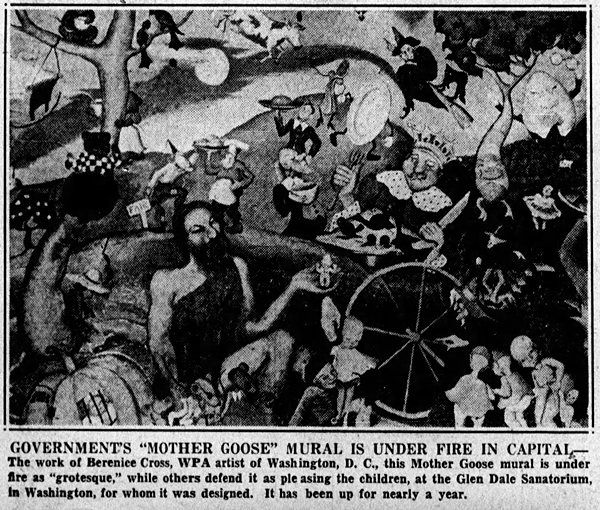
North Adams Transcript - Nov 19, 1937
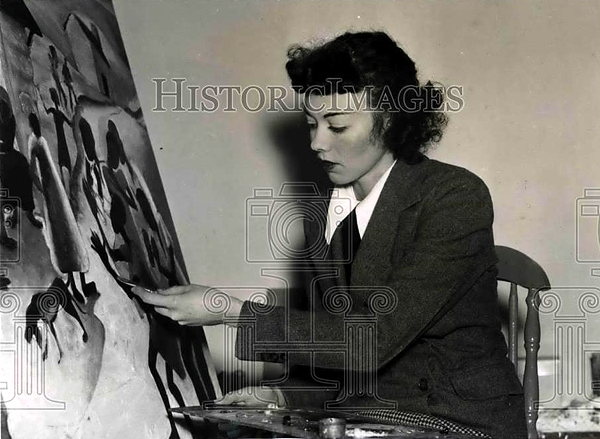
Posted By: Alex - Thu May 12, 2022 -
Comments (1)
Category: Art, Censorship, Bluenoses, Taboos, Prohibitions and Other Cultural No-No’s, 1930s
Hidden images in comic books
In Seduction of the Innocent, published in 1954, Fredric Wertham accused comic books of corrupting youth. One of the specific ways they did this, he alleged, was by concealing images of naked women in seemingly inoffensive panels. He helpfully reproduced one of these hidden images in his book.The image in question originally appeared in Jungle Comics #98, Feb 1948.

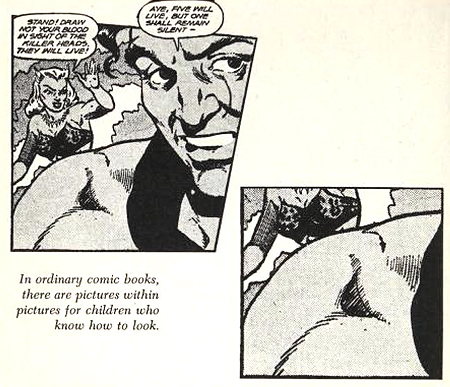
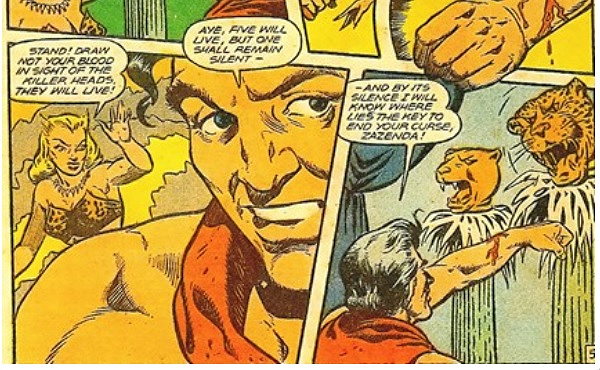
via Legends & Rumors
Posted By: Alex - Mon Apr 25, 2022 -
Comments (4)
Category: Censorship, Bluenoses, Taboos, Prohibitions and Other Cultural No-No’s, Comics
Jazz Emotions
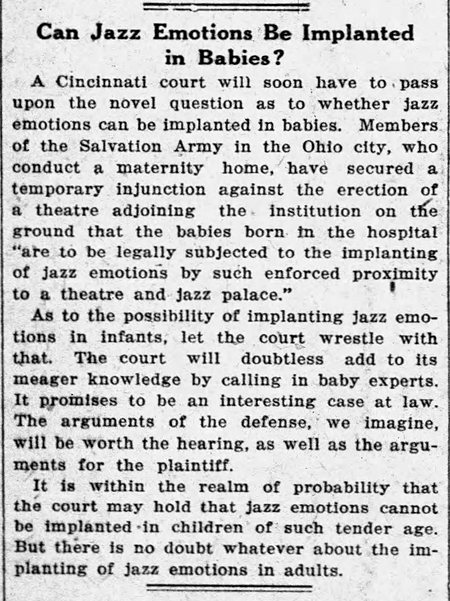
The Rock Island Argus - Feb 8, 1926
Posted By: Alex - Sun Apr 24, 2022 -
Comments (2)
Category: Babies, Censorship, Bluenoses, Taboos, Prohibitions and Other Cultural No-No’s, Music, 1920s
Polygamy Porter
Yet another banned beer, to go alone with Alex's batrachian brew. Article here.
The brewer's site, where you can purchase their t-shirt

Posted By: Paul - Mon Oct 18, 2021 -
Comments (1)
Category: Censorship, Bluenoses, Taboos, Prohibitions and Other Cultural No-No’s, Fashion, Marriage, Alcohol
Manly Bosoms Indecent
1934: Coney Island police continued to crack down on male bathers who adopted the new fashion of topless bathing suits.As for the female bathers:
"But if it's indecent we won't allow it," he said.
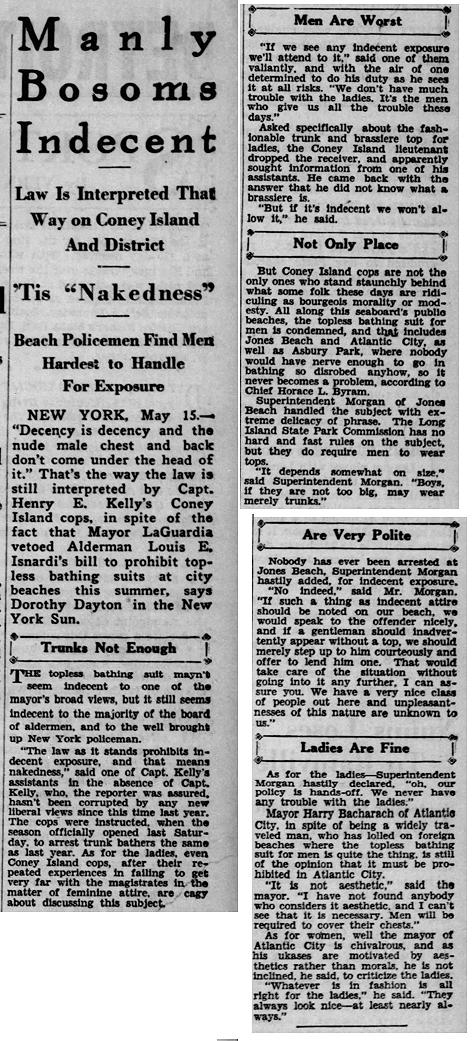
Windsor Star - May 15, 1934
Posted By: Alex - Mon Apr 05, 2021 -
Comments (1)
Category: Censorship, Bluenoses, Taboos, Prohibitions and Other Cultural No-No’s, Fashion, Swimming, Snorkeling, and Diving, 1930s
Liquid Dividends
What else could you do with your inventory on the eve of Prohibition?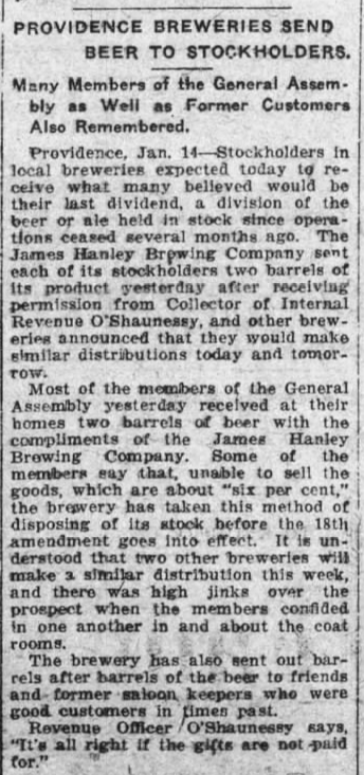
Source: Fall River Daily Evening News (Fall River, Massachusetts) 14 Jan 1920, Wed Page 7
Posted By: Paul - Sun Apr 04, 2021 -
Comments (0)
Category: Censorship, Bluenoses, Taboos, Prohibitions and Other Cultural No-No’s, Freebies, Come-ons and Loss Leaders, 1920s, Alcohol

| Who We Are |
|---|
| Alex Boese Alex is the creator and curator of the Museum of Hoaxes. He's also the author of various weird, non-fiction, science-themed books such as Elephants on Acid and Psychedelic Apes. Paul Di Filippo Paul has been paid to put weird ideas into fictional form for over thirty years, in his career as a noted science fiction writer. He has recently begun blogging on many curious topics with three fellow writers at The Inferior 4+1. Contact Us |




